Table of Contents
Can Puppies Have Peanut Butter? All You Need To Know!
You might have wondered quite often- Can puppies have peanut butter or not after seeing that jar in the kitchen or refrigerator.
Peanut butter is usually a good treat for dogs. You might find that your dog suddenly shows up in the kitchen when you’re trying to open the peanut butter jar. Dogs like it because they are fun to eat. Dogs, in general, may throw everything away for a lick of peanut butter. But Can puppies have peanut butter? Is it safe? What about the maximum amount? Let us find out Can puppies eat peanut butter or not?
Can puppies have peanut butter?

Yes, puppies can usually eat peanut butter if it isn’t salted and doesn’t have xylitol. Puppies can get a lot of protein, good fats, vitamins, and niacin from peanut butter. But feeding large amounts of peanut butter can be bad for your puppy’s health.
Ask your vet how much peanut butter your dog or puppy needs. Some dogs or puppies may have health problems like diabetes or food sensitivities that affect how much peanut butter they need.
What to know before Feeding Peanut Butter to Puppies
Xylitol
Most peanut butter is safe for puppies if they don’t have any other health problems.
But it would help if you were very careful about peanut butter with xylitol in it.
In the past, peanut butter was made with sugar instead of xylitol. But in recent years, people have stopped buying things made of sugar. Because of this, companies have started to use xylitol instead of sugar.
Nowadays, Xylitol is in most things that don’t have sugar, like gum, baked goods, chewable vitamins, breath mints, and toothpaste.
Don’t worry; xylitol is safe for people, but it is hazardous for dogs and can even kill them.
When a dog or puppy eats xylitol, its body reacts by letting out insulin. What happens next is that the dog’s blood sugar level goes down. This is called hypoglycemia.
Hypoglycemia is very dangerous and could kill your pup if you don’t treat it. The dangerous effects of xylitol can start from 10 to 60 minutes after giving it, making it a very lethal drug.
The thing is, you don’t have to put your dog or puppy’s life at risk.
Check the ingredients before you buy peanut butter for your dog, and don’t buy any peanut butter that has xylitol on the list of ingredients.
If your dog or puppies eat peanut butter with xylitol, you should call your vet.
Some signs of being poisoned by xylitol are
- Staggering
- Weakness
- Lack of coordination
- Collapse
- Seizures
Salted peanut butter is not dangerous, but it shouldn’t be given to puppies or adult dogs because it has a lot of sodium, which can be bad for their health. If you make your peanut butter, you’ll have full control over what goes into it.
When to Give Puppies peanut butter
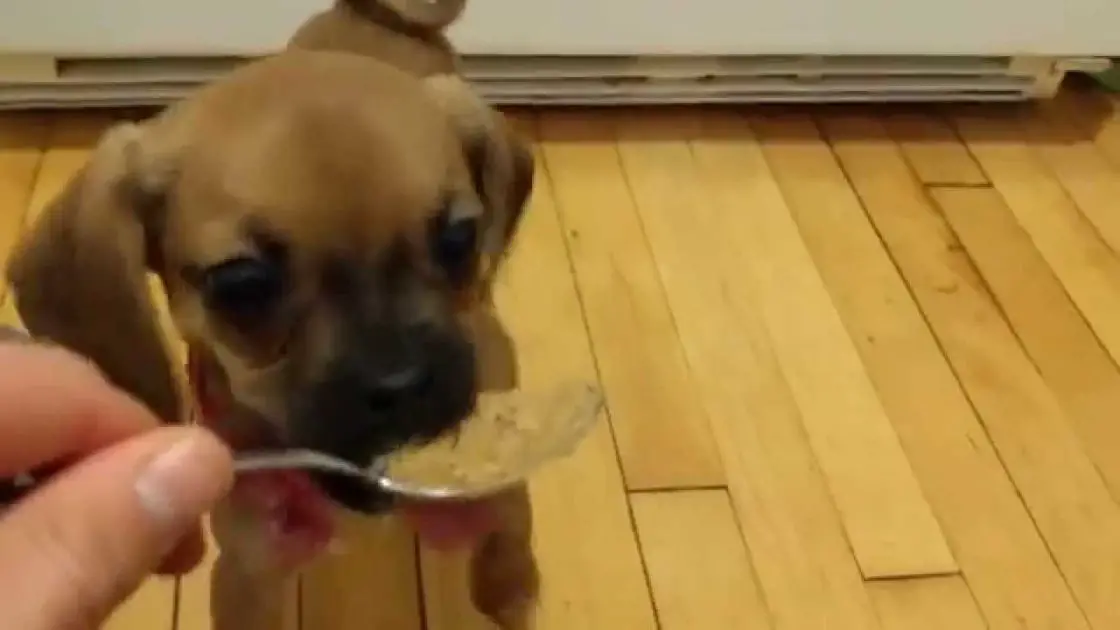
The best time to start feeding your puppies solid food is when they are eight weeks old, or about two months if each month has four weeks. Some sources also say that four weeks is a good age to start getting your puppies used to eating solid food.
In general, you should start giving your puppies peanut butter when they are four weeks old, and you should make sure it is a soupy gruel.
When you wean your puppies, your main goal is to make sure you set them on a growth path that will make them strong dogs when they grow up.
A good, well-planned diet should include:
- Encourage optimal growth
- Increase immunity
- Reduce the chances of becoming obese.
- Preventing Orthopedic problems
What is the Normal growth rate for puppies?
Small and medium-sized dog breeds should be fully grown by the time they are 10 to 12 months old. Larger dog breeds like Rottweilers and Great Danes take about 18 to 24 months to reach full size.
But different breeds don’t usually grow at the same rate. Growth rates are generally affected by the environment, genes, and food.
Nutrition is the most important of these three things for a puppy’s body shape and immune system. How much and what kind of food puppies get can make a big difference in how big they get.
Optimal or Maximal Growth Rate of puppies
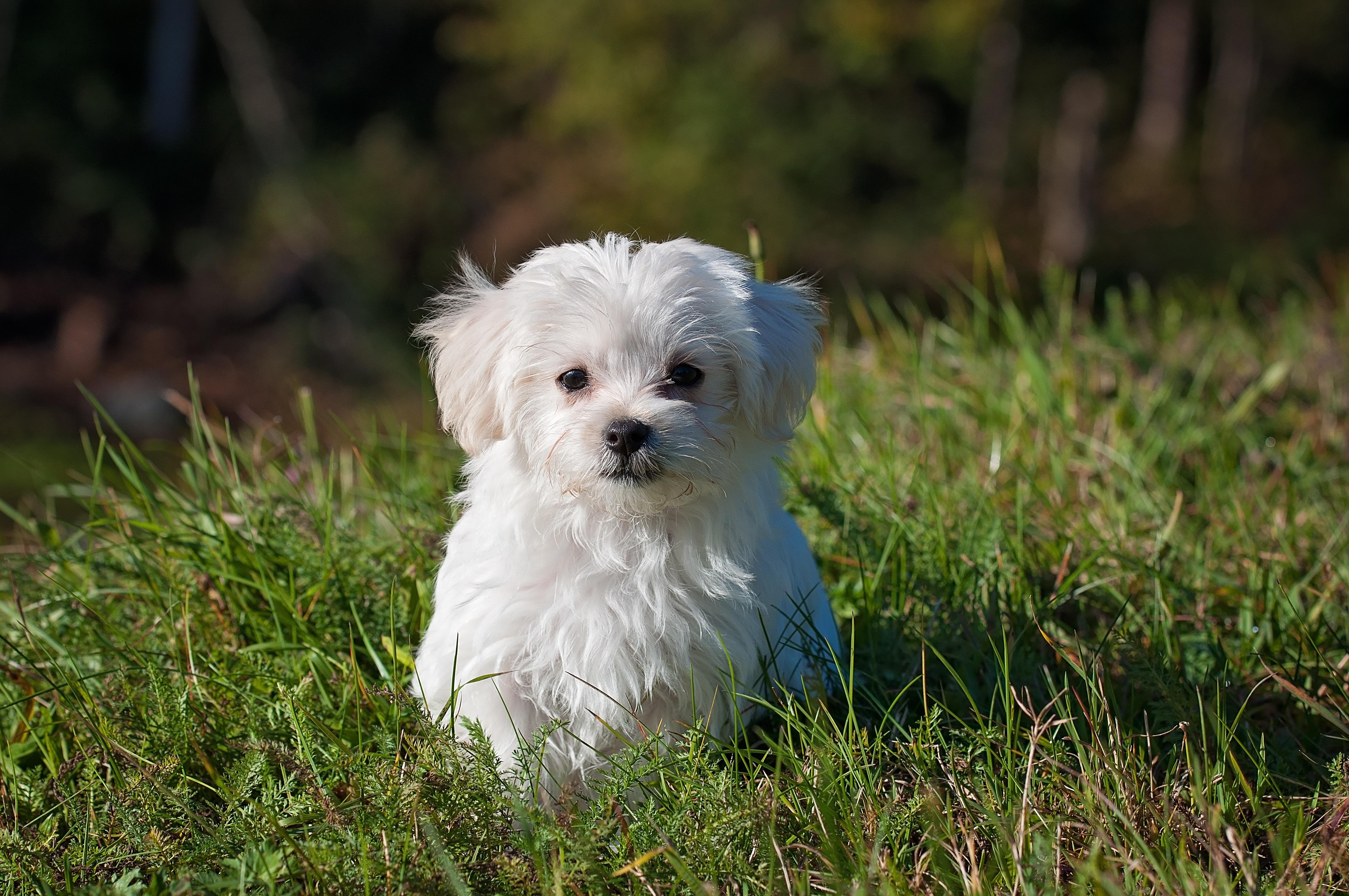
When raising your puppies, you might wonder which type of growth is better: optimal or maximum.
If dog breeders want to make high-quality dogs, they should aim for optimal growth instead of the fastest possible growth rate.
The best growth rate is slow and steady, so your puppy can meet all of its growth needs at different stages without becoming overweight or gaining too much weight.
On the other hand, a high growth rate means that the puppy grows faster. When people use this method, they usually feed their puppies a lot of fat and give them too much food most of the time, if not all of the time.
Maximal growth rates can lead to a shorter life span, obesity, and congenital disabilities because most puppies don’t get the proper diet.
Benefits of feeding Peanut Butter to Puppies
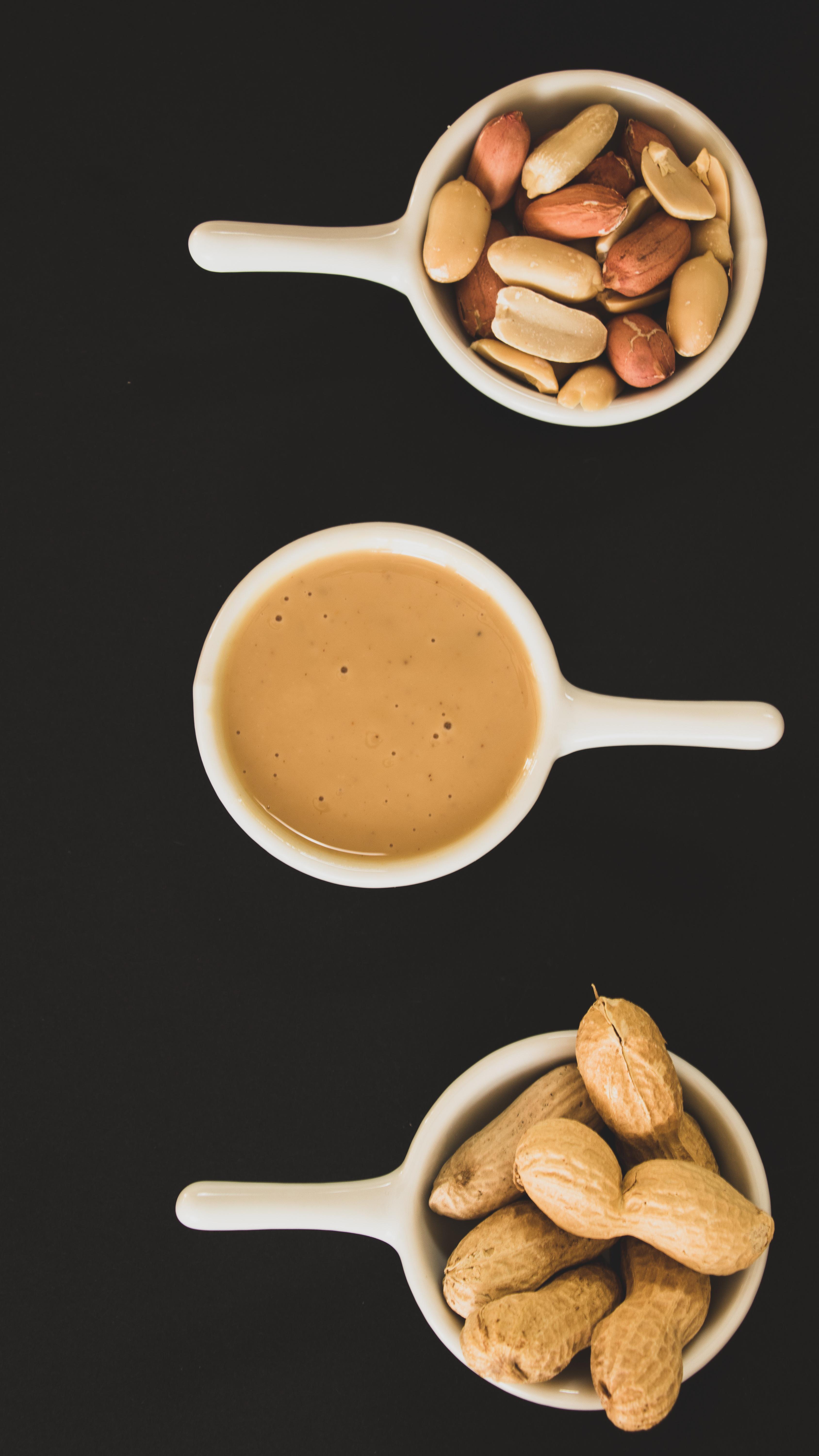
Protein
Protein is one of the essential nutrients to consider and monitor in your puppy’s diet.
When your pups finish drinking their mother’s milk, provide them with high-protein food.
The protein content for puppies should be between 22 and 32 percent of the dry matter they ingest, and this should decrease as they grow older.
This protein content range will help them grow the best, so don’t go above it. However, always consult your veterinarian because different dogs may have additional nutritional requirements.
Don’t feed puppies food meant for adult dogs because their nutritional needs are very different.
Peanut butter is an excellent way to get protein if they don’t overeat it. It should be mixed with other healthy treats, like bananas, to boost its nutritional value. Feed them in small amounts since too many treats and snacks can cause health problems.
Fat
Puppies are usually very active, so they need a steady energy supply to meet their bodies’ needs.
Peanut butter has a lot of fats in it, which makes it a good source of essential fatty acids. Fats give growing puppies energy and have vitamins that dissolve in fat.
Fats are also crucial for the skin and coat health of your puppy. Puppies who don’t eat enough fats have a rough coat and get sores on their skin.
But like other nutrients, fats should be given in moderation. Too much can cause health issues like developmental orthopedic disease and obesity.
Your puppy should only get about 10 to 25 percent of its dry matter from fat as a general rule.
Calcium
Puppies need calcium in their food, which is especially true for big or giant breeds of dogs.
If you want to breed large or giant dog breeds, you should talk to your vet first. Their calcium needs are very different from small or toy breed dogs like poodles and chihuahuas.
Peanut butter can give your puppies calcium, but it shouldn’t replace their calcium.
Phosphorus
Peanut butter is also an excellent way to get phosphorus, but it shouldn’t be the primary source of phosphorus.
Phosphorus makes the following things possible:
- Skeletal structure
- energy metabolism;
- locomotion DNA and RNA structure
- acid-base balance
Magnesium
Magnesium is also vital to a puppy’s health. It helps with the following things:
- Functioning of enzymes
- mineral structure of bones and teeth
- muscle and nerve-cell membrane
- hormone function and secretion
- stability
Potassium
Potassium makes the following functions happen in puppies
- Acid-base balance
- transport functions
- enzyme reactions
- nerve impulse transmission
Vitamins
Puppies need different vitamins in their food to grow and develop properly. Vitamins help the immune system, reproductive system, and coordination of nerves and muscles to grow and work better.
Risks of overfeeding Peanut Butter to Puppies
Too much of anything is bad, and peanut butter is no different.
Peanut butter has a lot of sugar in it. If you give your puppies too much peanut butter, they could become overweight or get pancreatitis.
So, to be safe, only give peanut butter free of xylitol and salt in small amounts.
How to feed Peanut Butter to Puppies
Before feeding, you should first look at what’s in the peanut butter and make sure it doesn’t have xylitol.
After making sure your peanut butter doesn’t have xylitol, you can feed your puppies peanut butter by doing the steps below.
Using toys
Even though your puppies might still be too young to know how to play with toys like Kongs, you can start teaching them to take food from a toy.
You can break up one or two banana pieces and mix them with a teaspoon of peanut butter or as your vet tells you to.
Fill the mixture into the kong toys and put them in the fridge before giving them to your puppies.
When you feed your puppy a toy, it can be a great way to teach them how to behave. The only problem with this method is that it only works for puppies who already know how to eat dry food.
Scoop and feed method
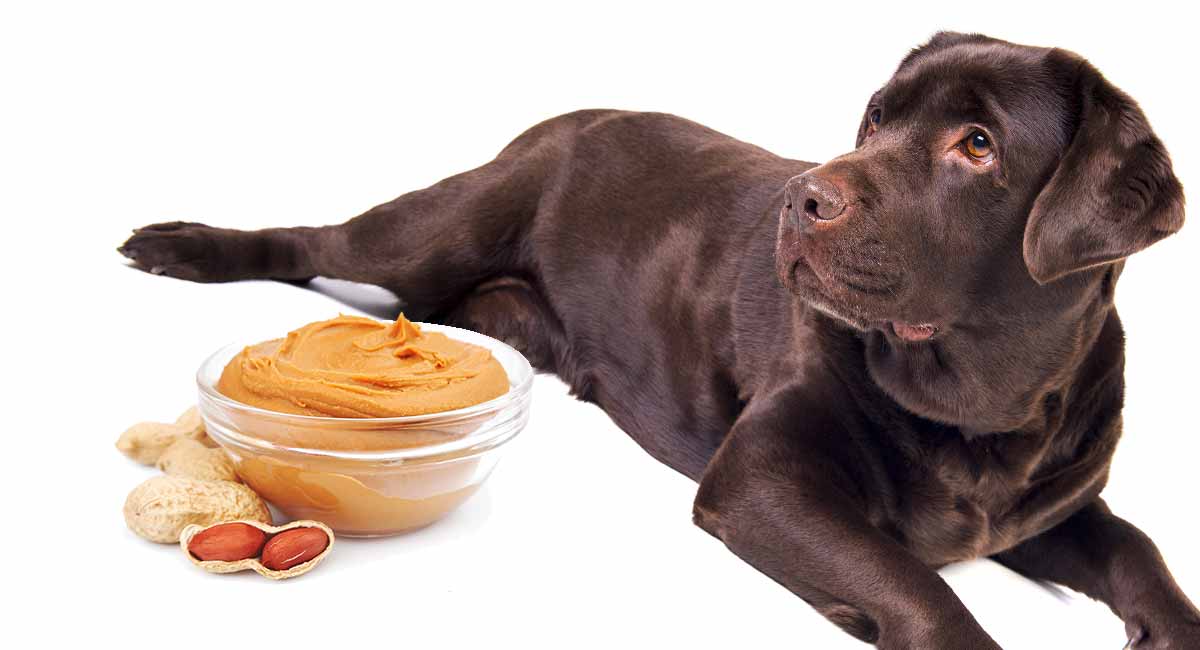
This method is as easy as it sounds. You need a spoon to scoop peanut butter and feed it to your puppy. You can also use your finger and let your puppy lick it.
This method will work for puppies that have no trouble eating solid food.
Mix peanut butter in Puppies’ food
The best way to feed peanut butter to puppies who have just stopped drinking their mother’s milk is to mix it into their food.
What is a suitable amount Of Peanut Butter?
Even though no set amount is thought to be safe, vets say that you should only give your puppy a toy stuffed with peanut butter once every two to three days and never more than that.
Many people say it’s OK to give your dog more than this amount. But make sure your dog is safe by following your vet’s rules. If your dog has a medical problem, please ask your vet first.
If your dog is generally healthy, they can eat any peanut butter or chocolate that doesn’t contain Xylitol.
This natural sweetener can cause hypoglycemia and liver damage in dogs.
If given in small amounts, it gives the dog vitamin B, which is needed for healthy skin and a shiny coat, and vitamin E. (suitable for the immune system’s proper function).
It also has proteins, fats that are good for the heart, and niacin, which gives your dog a lot of energy.
Your dog can play for hours with a stuffed peanut butter Kong.
Also, peanut butter can make it easier to give your dog medicine if you’re having trouble. Just put a small amount of peanut butter over the pill, and your dog will think you’re being nice to him.
Like anything else, overeating peanut butter can lead to weight gain or stomach problems. Too much peanut butter can also lead to pancreatitis. So, you can give your dog peanut butter as long as you don’t give it too much and it doesn’t have Xylitol in it.
The healthy type of peanut butter
“How to Choose the Right Peanut Butter?” is a frequently asked question on Facebook.
Here are some factors to keep in mind while selecting peanut butter for your dog:
- Check the label carefully and stay away from things that have Xylitol or chocolate.
- Even small amounts of sugar substitutes can kill a dog.
- Always pick raw, unsalted ones, and have low sodium levels.
Your dog can eat any brand of peanut butter that doesn’t have Xylitol in it.
Allergy symptoms
Before giving your dog peanut butter, you should first talk to your vet because some dogs have allergies to food or other things.
Even though peanut butter is a tasty treat that many dogs enjoy, some dogs are allergic to it. After giving the dog a spoonful, many dog owners learn this. When a dog eats peanut butter often, some symptoms may show up over time, while other dogs show signs right away.
The dog’s immune system will determine this. Some signs are red, itchy skin, and bald spots from licking the skin too much.
Most Dogs Enjoy Peanut Butter
I put this heading here to tell you why you might want to get peanut butter for your dog. Watch how your dog acts when you pull out the peanut butter:
- Will wag its tail with a lot of joy.
- It will make you laugh out loud.
- He will spend hours hunting and gathering with his interactive toys
- Will smack and lick
Can puppies have peanut butter? Final words
While peanut butter is safe for both dogs and puppies, it should be in moderation. Too much of it can cause health issues that limit your puppy’s development.
When purchasing peanut butter for your puppies or dogs, ensure it does not include xylitol. This drug can have life-threatening consequences if not treated or detected promptly.
Can puppies have peanut butter and more FAQs?
1. Can you give a 6-week-old puppy peanut butter?
Don’t make your dog wait any longer. Yes, pups can eat peanut butter as long as it isn’t too much and doesn’t include xylitol. Bring out the peanut butter and spread the word!
2. Is peanut butter ok for puppies?
The good news is you can give your dog regular peanut butter as a treat. Xylitol causes the problem, a sugar replacement found in low-sugar or sugar-free products. If the peanut butter you give your dog doesn’t have Xylitol in it, then your furry friend can eat it.
3. What can I put in a Kong for an eight-week-old puppy?
Put a small piece of freeze-dried liver in the hole at the end of the Kong so that your puppy can’t get it out. Spread some honey inside the Kong, fill it with kibble and cover the big hole with two crossed dog biscuits.
4. Can a puppy eat peanut butter in Kong?
You can put anything safe for your dog to eat inside a KONG. My favorite foods are peanut butter, yogurt, canned pumpkin, and fruit. The challenge stays interesting by using a wide range of foods. Use KONG treats to make stuffing easy and quick.
5. When can puppies have human food?
Puppy Chow If you want to feed your dog cooked “people food” for the rest of his life, you can start giving him boiled chicken and rice and other good foods when he is about eight weeks old.
6. How often can puppies have peanut butter?
In the beginning, it makes sense to give a small dog only half a teaspoon of peanut butter twice a day. As much as one teaspoon twice a day for a medium-sized or large dog.
7. Is cheese OK for dogs?
Yes, dogs can digest cheese. In reality, cheese is often used as a training tool, particularly for pups.
8. What can an Eight-week-old puppy eat?
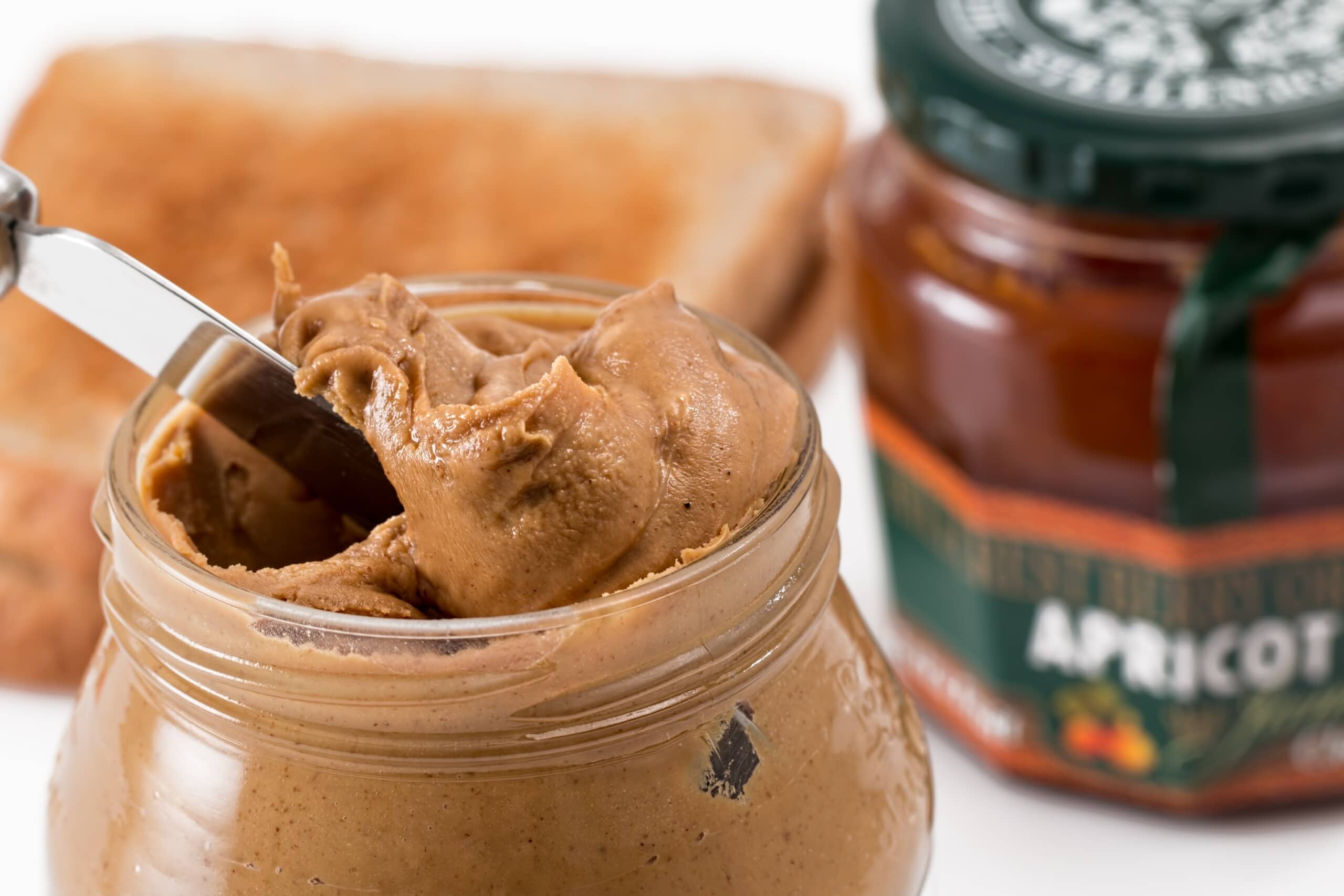
When your pup is about eight weeks old, you can wean it off its mother’s milk and introduce soft meals such as canned or dehydrated dog food. You should not provide hard meals to your puppy until they are at least 9 to 10 weeks old.
9. What can I put in a kong for my 9-week-old puppy?
To encourage your pup to chew, fill a kong with kong Puppy Snacks, kong Puppy Ziggies, or canned soft puppy chow and seal it with a small quantity of kong Puppy Easy Treat paste.
10. What should I put in my puppy’s crate at night?
What kind of bed should I put in the crate for my puppy? The best bedding for a puppy is one that can’t be broken. Don’t give your puppy blankets or towels. They can tear them up and swallow the pieces. If your puppy eats shredded fabric, you may have to take him to the veterinary emergency room to fix a blockage that could kill him.
Now you must have understood can puppies have peanut butter or not.


